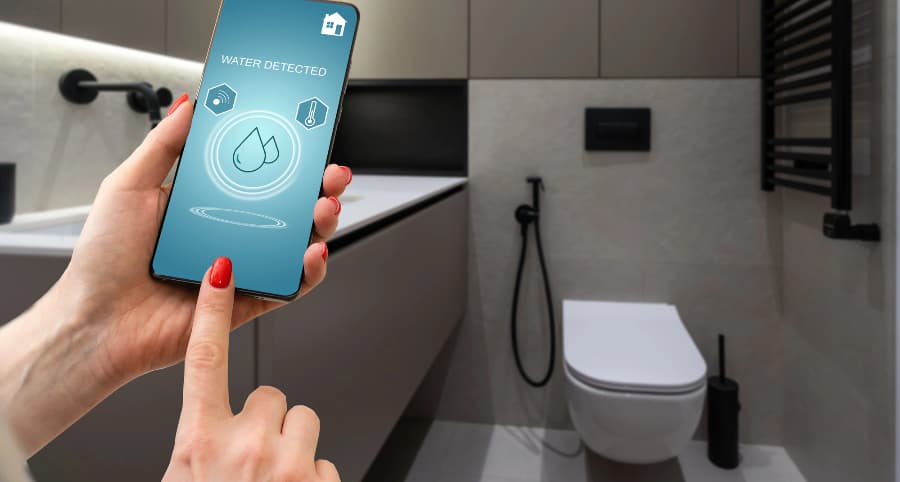How does a water sensor work and why use one with your Chicago smart home?

One small leak at your property can lead to big difficulties and thousands in damage. You must protect against this risk; thankfully, there’s an easy way to do so. A water sensor is an economical, simple, and effective solution. Learn how they work and why you might incorporate water sensors into your Chicago smart home.
How water sensors shield Chicago properties
Water infiltrates homes in many ways, whether from a broken appliance, plumbing problem, weather-related incident, or human error. However it happens, you must know right away, and this is how water sensors help. But how exactly do they work?
The majority of water sensors are conductive and function with corresponding electrodes. When water enters the area between the electrodes, an electrical connection is established, triggering your alarm. You’ll also come across capacitive sensors that emit an electrical field. When water reaches the conductive parts of these components, the field is broken, and your alarm sounds. Optical sensors using infrared LED light are another option.
Get more from your water sensor
Certain innovative water sensors give you even more protection as they feature incorporated temperature sensors. This is a helpful way to prevent frozen pipes. If there’s a drastic decrease in temperature, you’ll be notified right away. Taking action before pipes rupture will shield you from water infiltration and exorbitant repair costs.
Why connect water sensors to your Chicago smart home?
When water problems arise, you need to be warned at once. You can achieve this goal by integrating water sensors into your smart home. Whether you’re there to hear the alarm or somewhere else, you’ll receive an immediate update on your cell phone. In addition, your 24/7 monitoring agents will be informed. Each second is critical in a water emergency to control the destruction and disruption to your life.
Where should you install water sensors?
Any location susceptible to an influx of water is a suitable position for water sensors. Think about installing in these spots:
- Bathrooms: Position at the back of toilets or near bathtubs.
- Basements: Water commonly seeps into basements through leaky walls or due to heavy rain or broken sump pumps.
- Next to water heaters or appliances: Any water-utilizing appliance may eventually leak.
- Underneath sinks: Water sensors are great for discovering pipe leaks in locations not easy to see.
- Attics: Identify roof leaks promptly and avoid costly damage.
Install water sensors with your Vivint smart home
Give your home the robust protection it deserves with Vivint’s advanced tools. Our water sensors in Chicago connect to your Vivint mobile app to provide automatic updates when your alarm goes off. You also enjoy integrated temperature sensors to avert frozen pipes. Explore the smart home devices available in Chicago by dialing (312) 626-4802 today.
